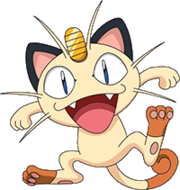.gif)
Koban (Japanese gold coin)
Encyclopedia

Japan
Japan is an island nation in East Asia. Located in the Pacific Ocean, it lies to the east of the Sea of Japan, China, North Korea, South Korea and Russia, stretching from the Sea of Okhotsk in the north to the East China Sea and Taiwan in the south...
ese oval gold coin
Gold coin
A gold coin is a coin made mostly or entirely of gold. Gold has been used for coins practically since the invention of coinage, originally because of gold's intrinsic value...
in Edo period
Edo period
The , or , is a division of Japanese history which was ruled by the shoguns of the Tokugawa family, running from 1603 to 1868. The political entity of this period was the Tokugawa shogunate....
feudal Japan, equal to one ryō, another early Japanese monetary unit. It was a central part of Tokugawa coinage
Tokugawa coinage
Tokugawa coinage was a unitary and independent metallic monetary system established by Shogun Tokugawa Ieyasu in 1601 in Japan, and which lasted throughout the Tokugawa period until its end in 1867.-History:...
.
The Keichō
Keicho
was a after Bunroku and before Genna. This period spanned from October 1596 to July 1615. The reigning emperors were and .-Change of era:* 1596 : The era name was changed to Keichō to mark the passing of various natural disasters...
era koban, a gold
Gold
Gold is a chemical element with the symbol Au and an atomic number of 79. Gold is a dense, soft, shiny, malleable and ductile metal. Pure gold has a bright yellow color and luster traditionally considered attractive, which it maintains without oxidizing in air or water. Chemically, gold is a...
piece, contained about one ryō of gold, so that koban carried a face value of one ryō. However, successive mintings
Mint (coin)
A mint is an industrial facility which manufactures coins for currency.The history of mints correlates closely with the history of coins. One difference is that the history of the mint is usually closely tied to the political situation of an era...
of the koban had varying (usually diminishing) amounts of gold. As a result, the ryō as a unit of weight of gold and the ryō as the face value of the koban were no longer synonymous.
Foreign trade
The Japanese economyEconomy of Japan
The economy of Japan, a free market economy, is the third largest in the world after the United States and the People's Republic of China, and ahead of Germany at 4th...
before the mid-19th century was based largely on rice. The standard unit of measure was the koku, the amount of rice needed to feed one person for one year. Farmers made their tax payments of rice which eventually made its way into the coffers of the central government; and similarly, vassals were annually paid a specified koku of rice. The Portuguese who came to Japan in the 1550s, however, preferred gold to rice; and the koban, which was equal to three koku of rice, became the coin of choice in foreign trade.
Some feudal lords began minting their own koban, but the value was debased with alloys of varying gold content. Edo authorities issued one currency reform after another and just about all of them debased the koban further. Additionally, counterfeit koban circulated after each reform, their value slightly less than that of the then current koban. By the time of Commodore Matthew C. Perry's visit in 1853, counterfeit koban from previous eras were preferred by merchants to the newer variants. The fraudulent older pieces were more valuable than newly-minted koban.
With the Meiji Restoration
Meiji Restoration
The , also known as the Meiji Ishin, Revolution, Reform or Renewal, was a chain of events that restored imperial rule to Japan in 1868...
in 1868 a new series of coins was ordered based on European currency systems and the koban was discontinued.
Cultural references

The Maneki Neko
Maneki Neko
The is a common Japanese sculpture, often made of ceramic, which is believed to bring good luck to the owner. The sculpture depicts a cat beckoning with an upright paw, and is usually displayed—many times at the entrance—in shops, restaurants, pachinko parlors, and other businesses...
is often depicted holding a koban, though the koban most Maneki Neko hold is indicated to be worth ten million ryō.

